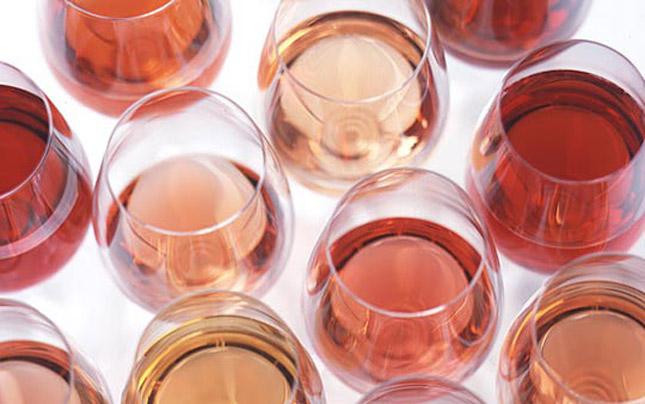When the weather gets warm my taste for red wine changes (although I am sipping a beautiful La Linda Malbec in this first week of June, as I write this), the wine that satisfies the need for fruit and complexity is Rosé aka “Blush,” “Rosato” in Italy, or “Rosado” in Spain.
What is Rosé
Rosé is a wine style. It is made from the same red wine grapes that make the red wines like zinfandel, pinot noir, syrah, and grenache. The only major difference in rosé vs. red wine is that the grape skins have not had long contact with the juice in the wine making process. Yes, white zinfandel comes from a red wine grape-zinfandel. Thus, rosé can range from very dry, off-dry or sweet.
How do you figure out what style Rosé is for you?
Try them all. But here’s a little tip: try rosé from those regions and red wine grapes you already know and like. If you prefer a particular red wine like Grenache or Syrah, try rosés from Europe made from these grapes. These rosés are a treat for those who like dry or off-dry reds. If you don’t like dry wines, try U. S. based rosés made from grapes produced in the U.S. like pinot noir, zinfandel and merlot. Oh, and terminology: should you use “blush” or “rosé”? They mean the same thing. Leave it to your personal preference. Enjoy!
What to try from area restaurant wine lists?
If are you looking for a wine to bridge the gap between red and white this summer, try some of these found on area wine lists:
Heidi Schrock “Biscaya”. Austria. 2011. This is a beautiful jewel-colored sustainable rosé. It danced and glittered in the glass recently at Ripple in Cleveland Park. It is off-dry and complex. Pair with shrimp, tilapia, chicken piccata or goat cheese at home.
Matello Rosé Pinot Noir. Willamette Valley, OR. 2011. This wine has Jolly Rancher’s watermelon candy aroma, but it doesn’t taste like candy. It has wonderful strawberry flavors but it is an off-dry rosé with the only hint of sugar coming from the well pronounced pinot noir fruit. A beautiful, sustainable, wine with nice acidity at the finish. Available at Ripple in Cleveland Park. Pair with vegetarian dishes and grilled summer vegetables.
Baudry-Dutour Cuvee Marie Justine Chinon, France 2010. Cabernet Franc’s rosé has a pink-tawny peach color. Notice the slight herbal flavors that add to its allure. Slight sweetness and wonderful balance. Goes well with oysters. Pair with shrimp salad, white fleshed fish, and mushrooms at home.
Charles & Charles Rose, Columbia Valley, Wash. 2011. A Syrah- based Rosé blended with shiraz. The wine maker’s tasting notes suggest aromas of watermelon, grass, wet stones and citrus. Available on the wine list at Poste Brasserie in Penn Quarter. Pair with fish and chips and pork loin at home.
Jean-Maurice Raffeault Chinon Loir Valley, France, 2011. According to Vinoteca on 11th Street, NW’s wine list, this pale blush Cabernet Franc rose is “tart, funky” with under-ripe raspberry flavors. Well, I didn’t find it funky, but it was spunky with a wonderful minerality. Pair with cheeseburgers.
Dom. de la Courtade ‘L’alycastyre’, Côtes de Provence, France, 2011. This richly colored French rosé is an good example of how refreshing European-style rosés can be. It is made of grenache, tibouren and mourvèdre. Notice the strawberry flavors. It is refreshing as a cool drink of water. On the list at Vinoteca Wine Bar on 11th Street, N.W. Pair with grilled chicken and red snapper at home.
At home, chill and serve your rosé between 40 and 48 degrees, and you will seeing through rosé-colored glasses all summer long. Cheers! ?


